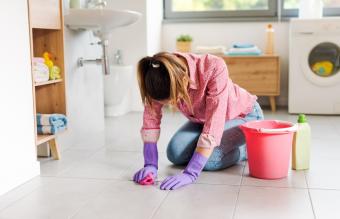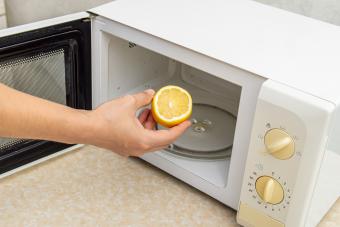
Penny cleaning science projects are a popular choice at grade school science fairs - and for good reason. The chemistry behind the experiment is simple yet interesting, and the project is easy for children of all ages to do. The young scientist tries to find out which of several solutions will clean pennies best, eliminating the copper oxide that gives the surface a dull and tarnished appearance.
Setting Up the Project
To begin, the experimenter and supervising adult should plan out which solutions they have access to and can use to test their penny-cleaning capabilities. They will need one tarnished, dirty-looking penny for every solution chosen plus one extra as a control (meaning that nothing will be done to this final penny). Look for pennies made before 1982 and roughly about the same time; this way they will be more tarnished and the pennies will have similar composition.
Cleaning Solution Suggestions
Once the budding scientist has a pile of pennies, he or she should choose and collect their selection of cleaning solutions. Most of these aren't substances that are typically used to clean, which is part of makes guessing how they will affect the pennies more fun.
Some common suggestions include:
- Plain water
- Soapy water
- Lemon juice
- Vinegar
- Vinegar with salt
- Ketchup
- Hot sauce
- Coca Cola
- Baking soda and water
- Apple, grape, or orange juice
- Milk
Forming a Hypothesis
A hypothesis is a prediction of what is going to happen in an experiment based on knowledge that the experimenter already has. In this case, talk with the young scientist about which solutions he or she thinks will best clean the pennies. They can also consider which might clean the pennies fastest. Children often think the soapy water will work best as it is normally used for cleaning, but children who understand what acids are or who know a little about chemistry may have a better idea about what will work.
Performing the Experiment
This experiment can be performed with things generally found around the house, so it's a great choice for even a quick rainy day project. One option is to incorporate the use of pH paper (which measures how basic or acidic something is when the paper is dipped into a substance) to help the child further understand why some of the solutions may work better than others. The experiment can be done with just as much fun and learning without using this tool.
Supplies
Once there's a working hypothesis, the experiment itself can begin. Here's what a young scientist will need to get started:
- At least two of the solutions from the above list
- One penny for each solution plus one extra
- One small dish or cup for each solution (plastic or paper cups with a couple inches off the top cut off will work if there aren't drinking glasses to spare)
- Masking tape (optional)
- A marker
- Tweezers
- pH papers (optional)
- Paper towels
- Camera (optional)
Directions
In order to perform this simple experiment, do the following:
- Using the tape and marker, label each dish or cup with the name of the solution that will go into it.
- Pour enough of each solution into its corresponding dish to cover the pennies (it doesn't take much).
- (Optional) Dip one piece of pH paper in each solution (it turns more blue for basic liquids and more red for acidic ones), let it dry, and label which liquid it was dipped in.
- Put one penny in each of the liquids and make sure it's fully submerged.
- Let sit for about 10 minutes.
- Take the pennies out one at a time and, keeping track of which penny is which, rinse each one off.
- Let the pennies dry on pieces of paper towel.
- Record your results; photographs are helpful.
Discussing the Results
Once the results are in, talk to the child about which pennies look the cleanest and if they can see any patterns regarding which solutions seemed to do the best job. This is one reason that the pH papers can be a helpful tool.
Understanding Tarnish
The word "tarnish" refers to the dull or gray-green coloration found on some older pennies. It isn't just dirt, it is the result of the copper in the pennies interacting with oxygen in the atmosphere. When the oxygen and the copper on the coins' outsides interact, a substance called copper oxide is formed. To remove this tarnish, an acid needs to be used to weaken the bonds between the copper and oxygen atoms. Adding salt to any of the acids (lemon juice, vinegar, etc) makes this acid cleaning more effective by creating free hydrogen atoms in the solution, which increases the acid's strength.
The Results
If this experiment is being used for a science fair or class presentation, the young scientist has the option to either take photos of each penny with a label for which solution was used or even to bring the pennies themselves in. The child might decide to pick a winning solution or even to rank the pennies in order of which is the most improved. The child should be prepared to discuss why they think some solutions were more effective than others.







